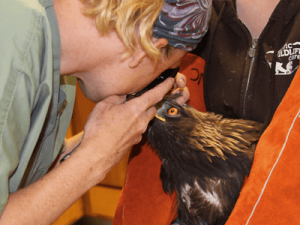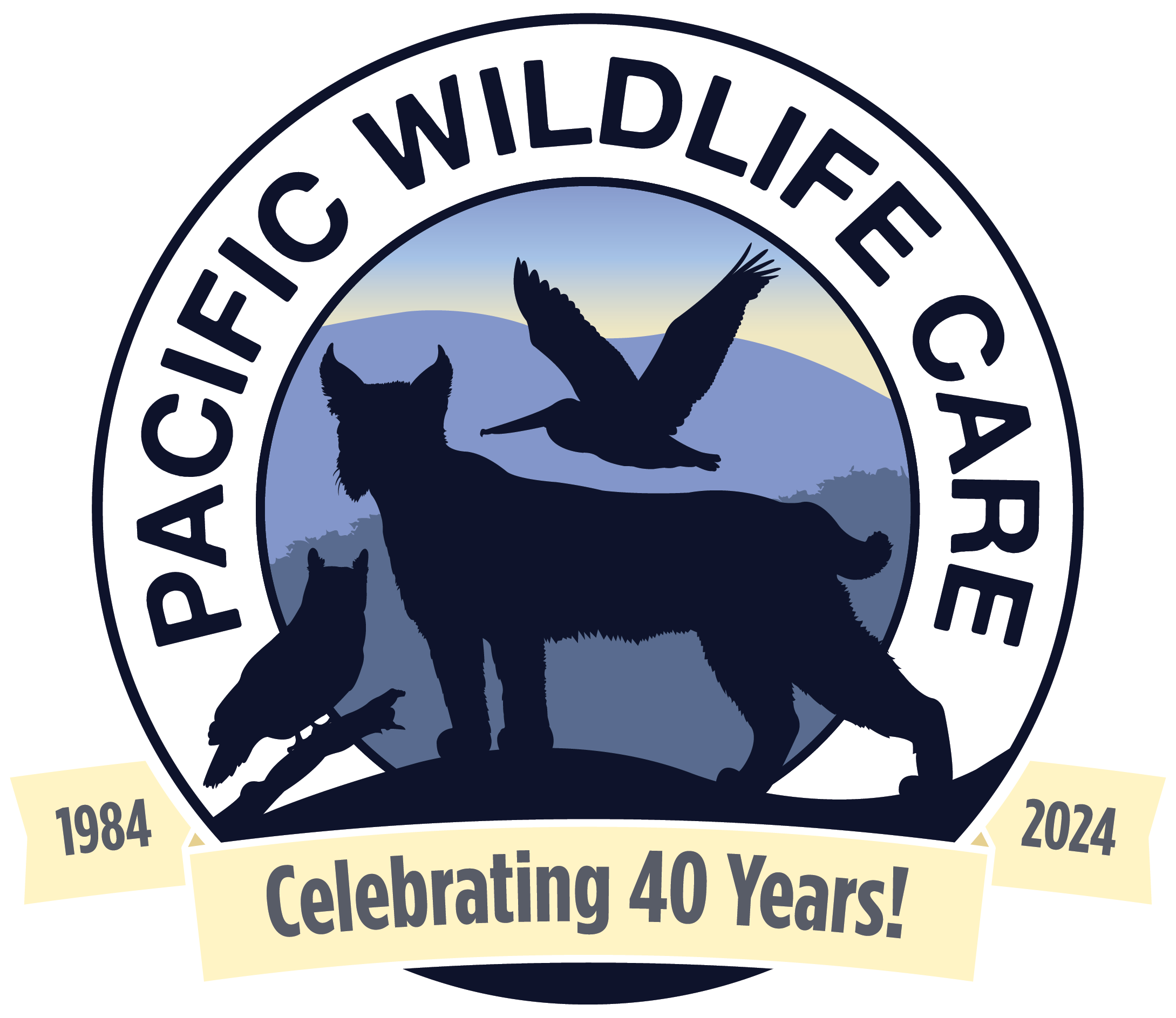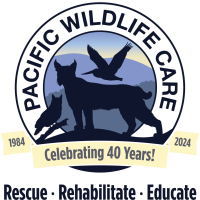Rehabilitation Process
The Rehabilitation Process begins when a rescuer or Rescue/Transport volunteer brings an animal to the Rehabilitation Center. When an animal arrives at the center it is immediately taken from the reception area into an examination room. The person delivering the animal is asked to remain in the reception area in order to complete important and necessary paper work (where and when the animal was found, any prior care received, etc.). This information is critical for proper assessment and care of the animal.
When an animal arrives at the Rehabilitation Center, it is taken from the reception area to an examination room. The person submitting the animal is asked to remain in the reception area to complete important and necessary paper work (where and when the animal was found, any prior care received, etc.). This information is critical for proper assessment and care of the animal.
Unless there are severe injuries requiring immediate treatment, the animal is given a period of time to de-stress prior to conducting a full examination. This increases its chance of survival. To reduce stress, human contact is kept to a minimum.
Initial Analysis – a Physical Exam
Many conditions are not immediately recognizable, so a complete exam is conducted. We look for:
- signs of shock
- dehydration
- emaciation
- fractures
- infections
- evidence of parasites
- wounds
- neurological damage
- bone disease (occurs in wild animals fed an improper diet)
Immediate Treatment
This may include:
- fluids (for dehydration)
- tube feeding (for emaciation)
- stopping bleeding
- suturing (stitches)
- stabilization of a fracture
- medications (for infections, head injuries or pain)
- removal of fish hooks and fishing line
- wound debridement
- surgery (Dr. Shannon Riggs, PWC Staff Veterinarian)
The results of the initial analysis determine the following protocol.
Immediate Release
Although more the exception than the rule, some animals can be released within twenty-four hours after observation and/or minor treatment.
Short-term care
Animals needing this care may have minor injuries or infections or need medications and are housed either at the Rehabilitation Center or at homecare volunteer sites for several weeks prior to release.
Easily stressed species needing greater isolation or animals needing care extending beyond our daily operating hours are placed with homecare volunteers. All other animals are cared for at the Rehabilitation Center.
Restrictions for Public ViewingThe Rehabilitation Center operates under state and federal permits and must adhere to strict requirements pertaining to interaction between members of the public and the wildlife in our care. For these reasons, we do not allow members of the public into the examination and treatment areas. In addition, it is best to limit human contact with wildlife so that the animals remain “wild” when released.
Long-term care
Easily stressed species needing greater isolation or animals needing care extending beyond our daily operating hours are placed with homecare volunteers. All other animals are cared for at the Rehabilitation Center.
Restrictions for Public ViewingThe Rehabilitation Center operates under state and federal permits and must adhere to strict requirements pertaining to interaction between members of the public and the wildlife in our care. For these reasons, we do not allow members of the public into the examination and treatment areas. In addition, it is best to limit human contact with wildlife so that the animals remain “wild” when released.
The Rehabilitation Center operates under state and federal permits and must adhere to strict requirements pertaining to interaction between members of the public and the wildlife in our care. For these reasons, we do not allow members of the public into the examination and treatment areas. In addition, it is best to limit human contact with wildlife so that the animals remain “wild” when released.
Orphans
Many babies are brought in who have been separated from their parents. These young animals must go through their growth cycle until they are old enough to care for themselves.Serious injuries or infectionsSome compound fractures or complicated systemic infections require a lengthy healing process.Severe emaciationOften, animals brought into the Rehabilitation Center have been unable to obtain food for themselves due to injuries. They may need attention not only for immediate injuries, but also long-term care to allow themselves to be re-nourished.
Prior to release, each animal is assessed to ensure its ability to survive in the wild. The animal must be in good physical condition and possess skills necessary for survival. For example, squirrels must be able to crack nuts and build nests and birds need to be self-feeding and to demonstrate excellent flying form and strength.
All animals are released in their appropriate habitat, which meets the conditions required for that species. In accordance with the California Department of Fish and Wildlife regulations, mammals must be released within three miles of where they were found.
Unfortunately, we are not able to save every animal that comes to us. Some animals are so badly injured that their eventual recovery and release into the wild is not possible. These animals are humanely euthanized by our full-time veterinarian or a rehabilitation technician. A quick and painless end is far better for the animal than a long and sometimes painful period of suffering.


